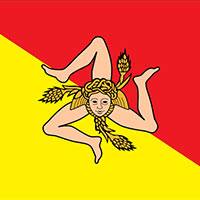Tommaso Fazello (1498–1570) – the father of Sicilian history
Tommaso Fazello (1498 – 8 April 1570), known as the father of Sicilian history, is the author of the first printed history of Sicily: De Rebus Siculis Decades Duae, published in Palermo in 1558 in Latin, compiled at the command of Paolo Giovio. He was a Dominican friar, historian and antiquarian, born in Sciacca, and died in Palermo.
Fazello travelled extensively all over Sicily, and rediscovered the ruins of the ancient Sicilian towns of Akrai (modern Palazzolo Acreide), Selinus (modern Selinunte) and Heraclea Minoa. He also rediscovered the Temple of Olympian Zeus at Akragas (modern Agrigento).
Screenshots of the 1560 edition
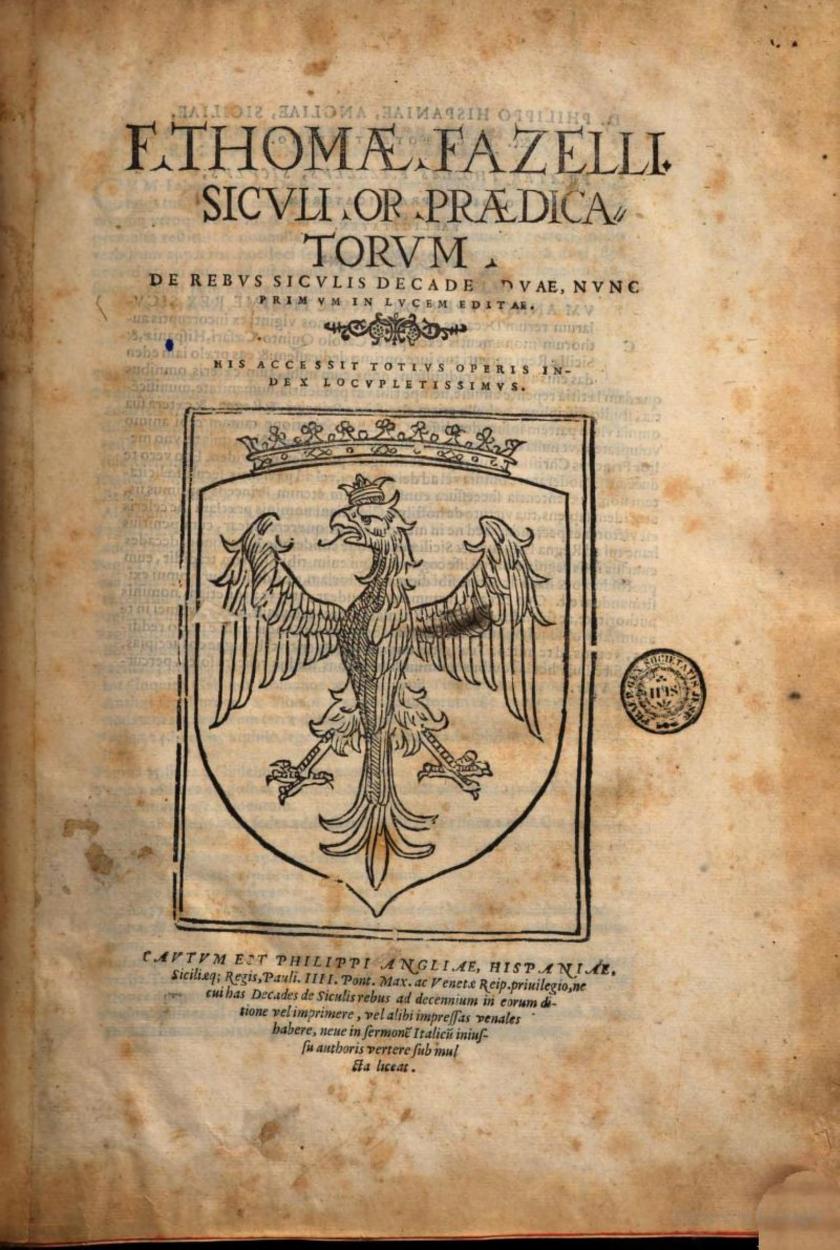
Tommaso Fazello: F. Thomae Fazelli Siculi or. Praedicatorum De rebus Siculis decades duae. Public Domain Mark 1.0
Publisher of the first edition: Giovanni Matteo Mayda & Giovanni Francesco Carrara (Palermo)
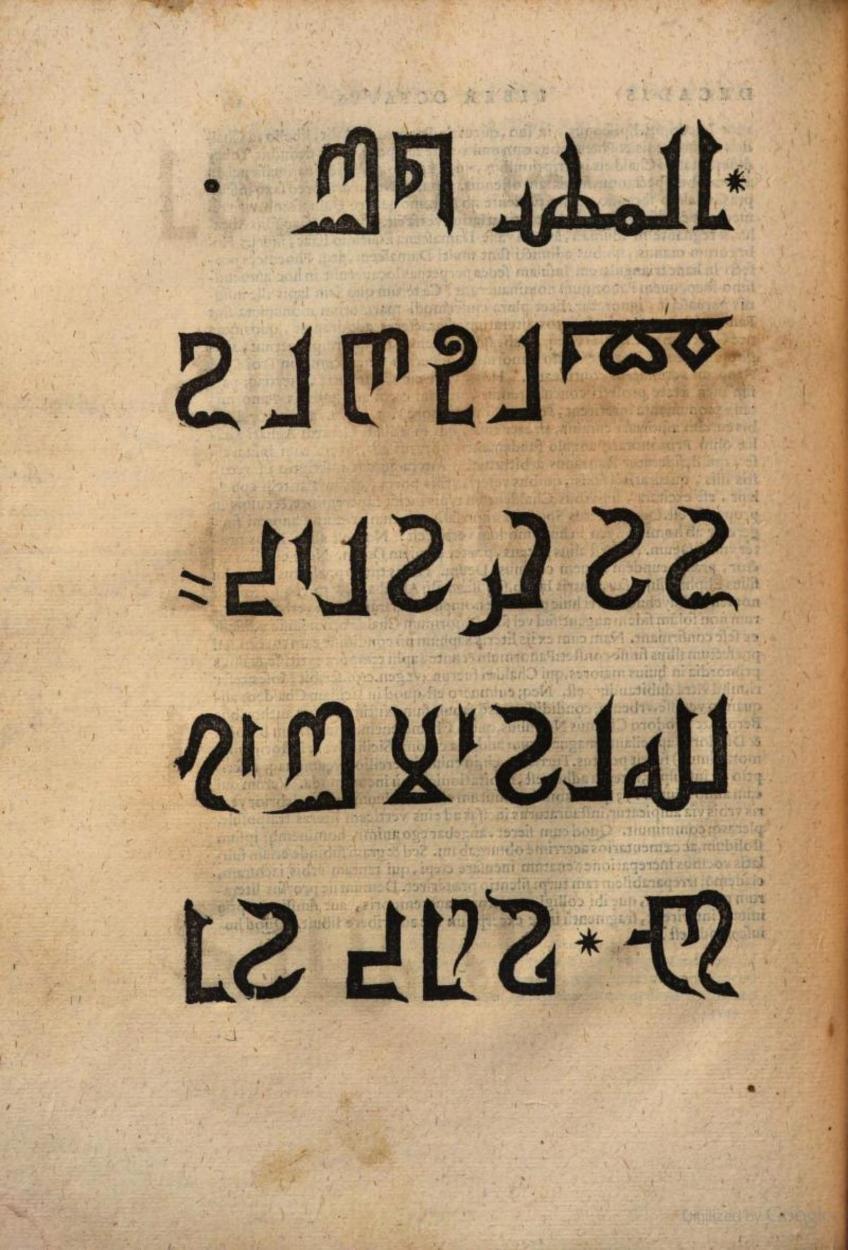
Kufic script in Tommaso Fazello: F. Thomae Fazelli Siculi or. Praedicatorum De rebus Siculis decades duae. Public Domain Mark 1.0. Publisher of the first edition: Giovanni Matteo Mayda & Giovanni Francesco Carrara (Palermo).
De rebus Siculis decades duae was compiled at the command of Paolo Giovio by the Sicilian-born Dominican friar Tommaso Fazello (born in Sciacca 1490 and died in Palermo 1570). De rebus Siculis decades duae includes a double-page woodcut plate of an old inscription. With this work, the Dominican friar Tommaso Fazello single-handedly created modern Sicilian historiography. He also rediscovered the ruins of the ancient Sicilian towns of Akrai (Palazzolo Acreide), Selinus (Selinunte), and Heraclea Minoa, as well as the Temple of Olympian Zeus at Akragas (Agrigento). Fazello’s work is still considered fundamental for the study of ancient Sicily.
Kufic
Kufic script, an early form of Arabic calligraphy that was used to write the Arabic language. It is characterized by the use of straight and angular lines, and is often used to write the Quran (also romanized Koran or Qur'an), the sacred text of Islam. The name “kufic” comes from the city of Kufa, which was an important center of learning and scholarship in the early Islamic world. Kufa is a city in present-day Iraq with c. 110,000 inhabitants. The city is located about 170 kilometers south of Baghdad. It was founded in the 7th century CE, and quickly became an important center of learning and scholarship. Many of the early Islamic scholars, including the famous theologian Abu Hanifa, lived and worked in Kufa. The city is considered to be one of the birthplaces of the Shia branch of Islam (the second-largest branch of Islam), and it remains an important center of Shia scholarship and culture to this day.
Kufic calligraphy is highly respected in the Islamic world and is often used in the design of Islamic architectural elements, such as mosaics, tiles, and inscriptions on buildings. Famous examples in Sicily can be found on a column in La Martorana (Santa Maria dell'Ammiraglio) and on a column outside the cathedral in Palermo.
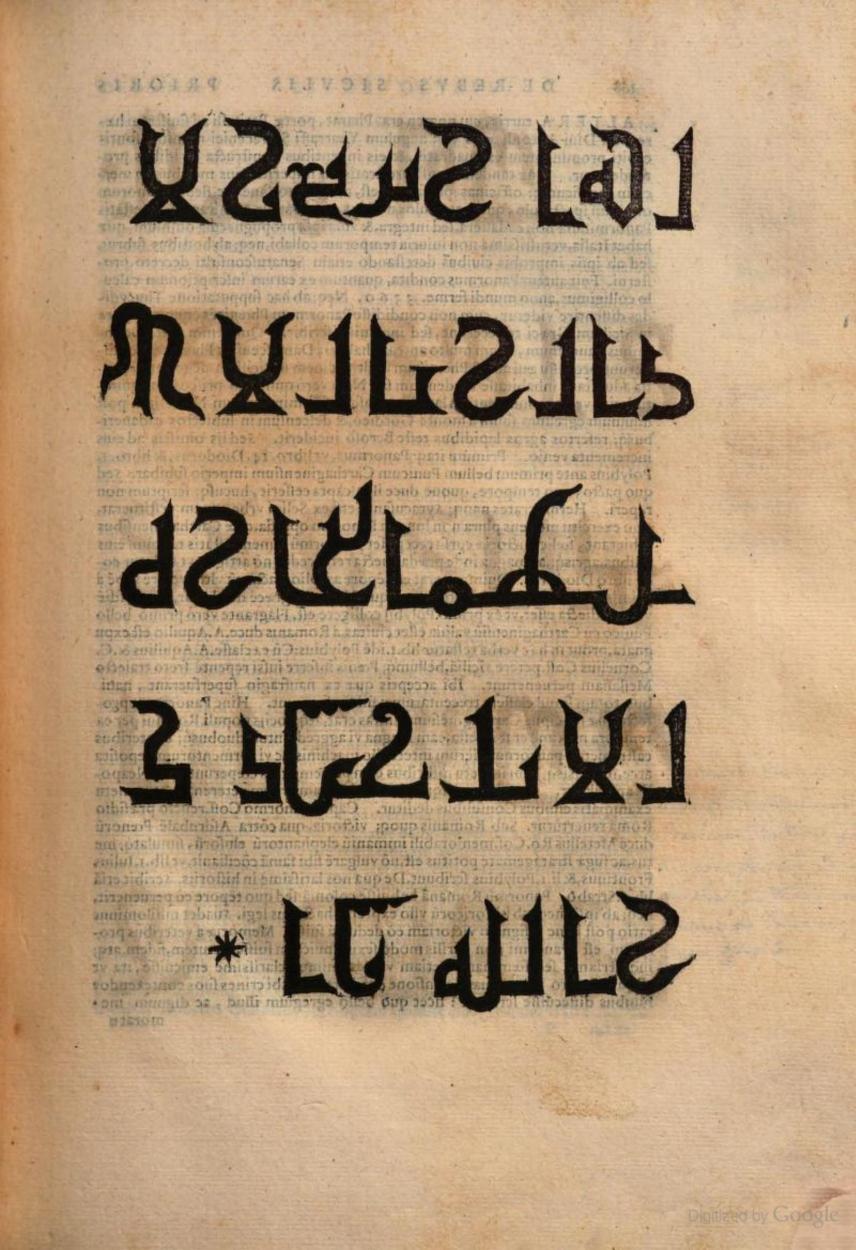
Arabic letters.
Tommaso Fazello: F. Thomae Fazelli Siculi or. Praedicatorum De rebus Siculis decades duae. Public Domain Mark 1.0
Publisher of the first edition: Giovanni Matteo Mayda & Giovanni Francesco Carrara (Palermo)
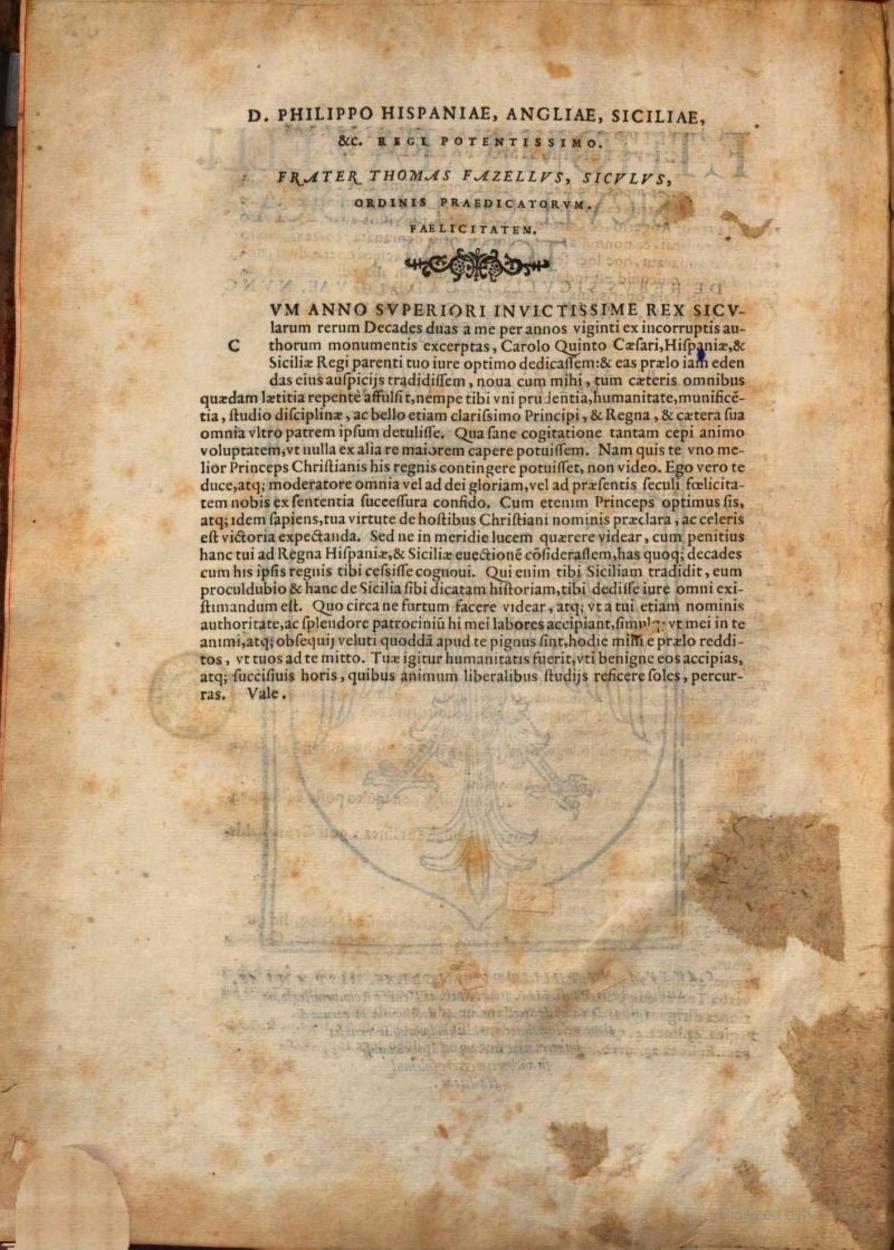
Tommaso Fazello: F. Thomae Fazelli Siculi or. Praedicatorum De rebus Siculis decades duae. Public Domain Mark 1.0
Publisher of the first edition: Giovanni Matteo Mayda & Giovanni Francesco Carrara (Palermo)
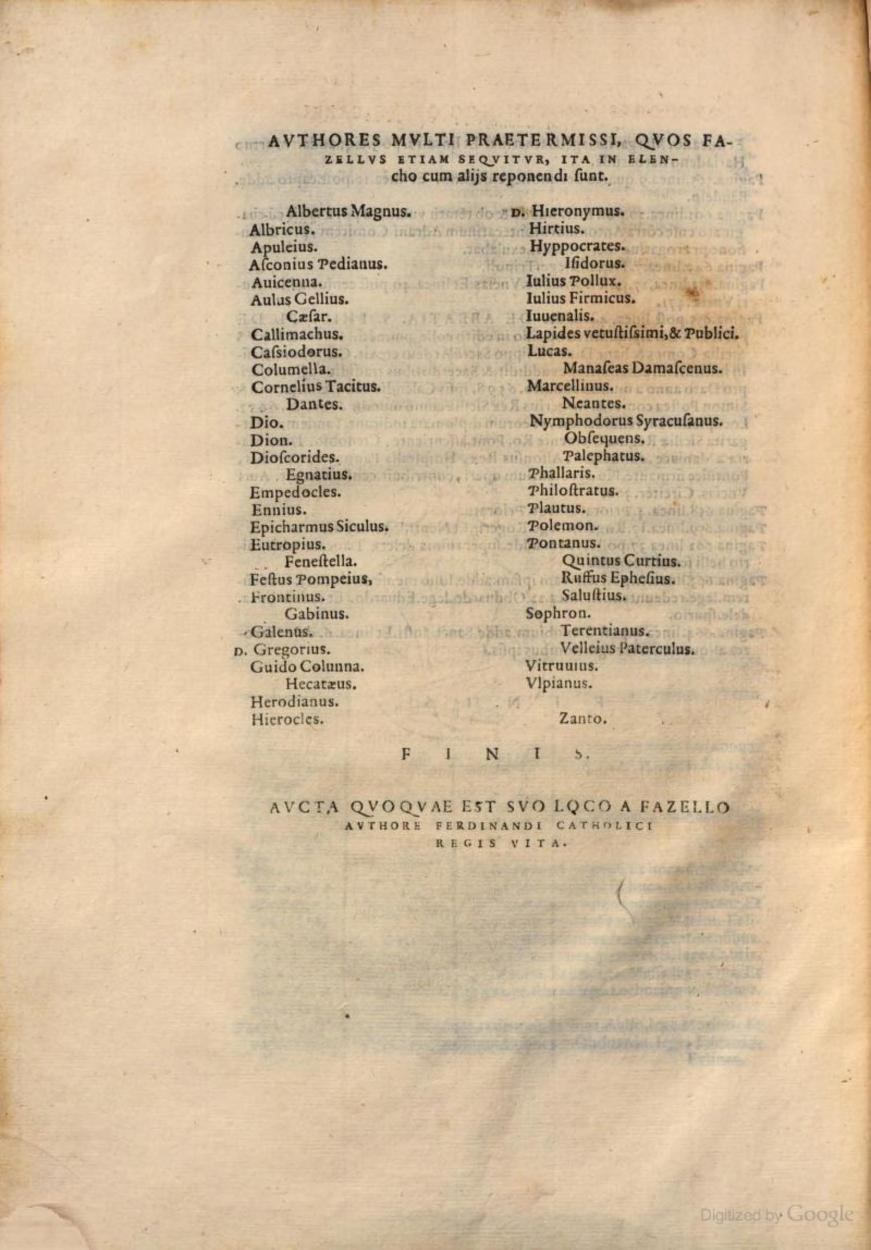
Tommaso Fazello: F. Thomae Fazelli Siculi or. Praedicatorum De rebus Siculis decades duae. Public Domain Mark 1.0
Publisher of the first edition: Giovanni Matteo Mayda & Giovanni Francesco Carrara (Palermo)
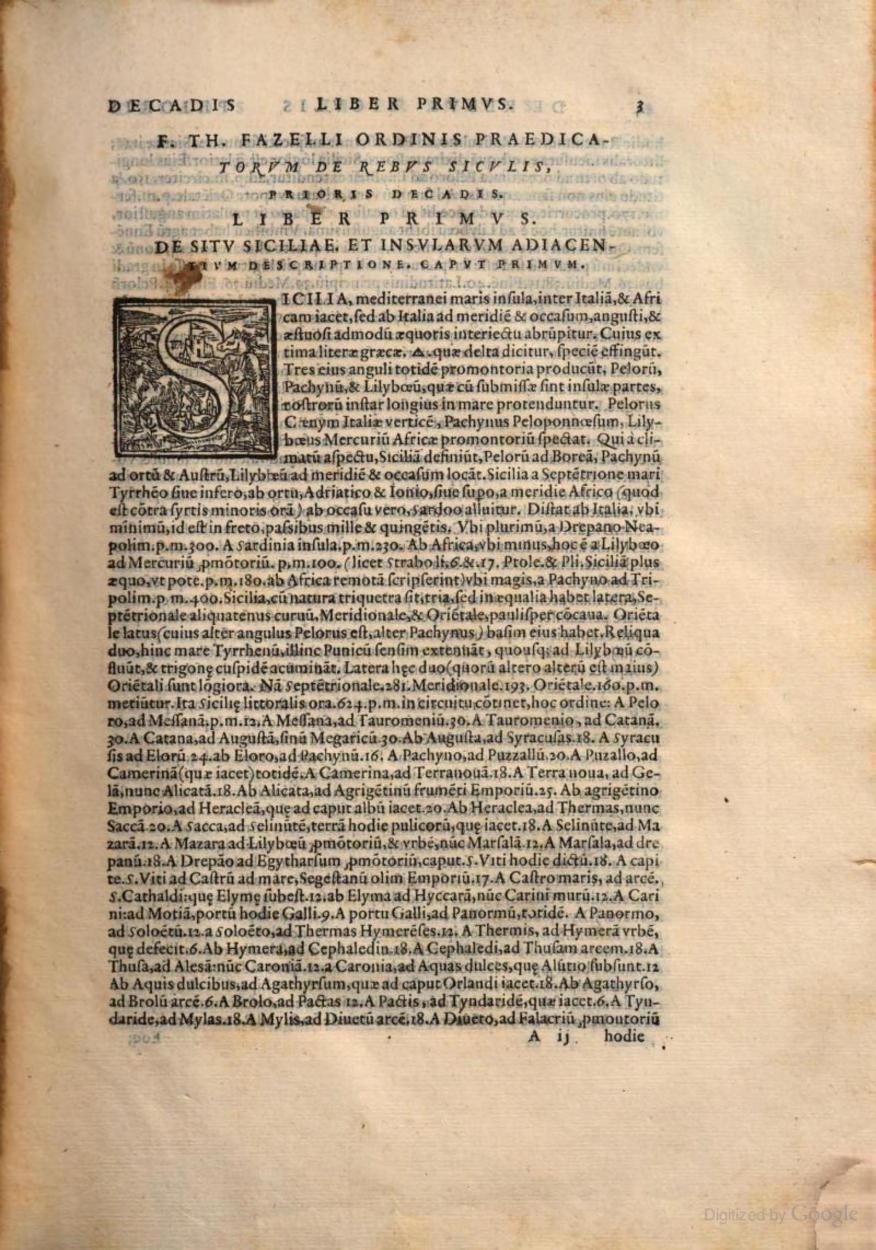
Tommaso Fazello: F. Thomae Fazelli Siculi or. Praedicatorum De rebus Siculis decades duae. Public Domain Mark 1.0
Publisher of the first edition: Giovanni Matteo Mayda & Giovanni Francesco Carrara (Palermo)
First edition of De rebus Siculis decades duae (1558), Antiquariat INLIBRIS Gilhofer Nfg. GmbH (Vienna, Austria)
Acireale - Agrigento - Castelbuono - Catania - Cefalù - Enna - Erice - Modica - Monreale - Noto - Palermo - Ragusa Ibla - Segesta - Selinunte - Taormina - Syracuse (Siracusa) - Trapani -
Alesa Arconidea - Aleister Crowley in Cefalù - Bagheria - Balconies in Sicily - Baron Wilhelm von Gloeden - Baroque architecture in Sicily - Birds in Sicily - Caccamo - cars in Sicily - Castelmola - Cats in Italy - Collesano - Death in Sicily - Death in Sardinia - Entella - Film locations in Sicily - Fish, fishermen and fish markets in Sicily - Gela - Gibilmanna - Greeks in Sicily - Halaesa Arconidea - insects in Sicily - Linguaglossa - Lizards in Sicily - Maps of Sicily - Monreale Cathedral - Monreale Cloister - Life in Sicily - Mosaics in Sicily - Mount Etna - Museums and Exhibitions - Normans in Sicily - Palermo: Museum of the Holy Inquisition - Palermo: the Norman Palace - Palermo: Oratorio del SS. Rosario, San Domenico - Palermo: the Palatine Chapel (Cappella Palatina) - Palermo: Richard Wagner in Sicily - Palermo: La Zisa - Palermo: Chiesa Santa Maria della Catena (Church of Saint Mary of the Chain) - Syracuse: The Archeological Park - Tommaso Fazello - Tuna fishing in Sicily (La Mattanza) - Videos - Villa Palagonia (Bagheria) "The Villa of Monsters" (Villa dei Mostri) - Villa Romana del Casale (near Piazza Armerina) - Sicily in Art - Sicilian Art and Artists - The White Lotus season 2 locations in Sicily -

